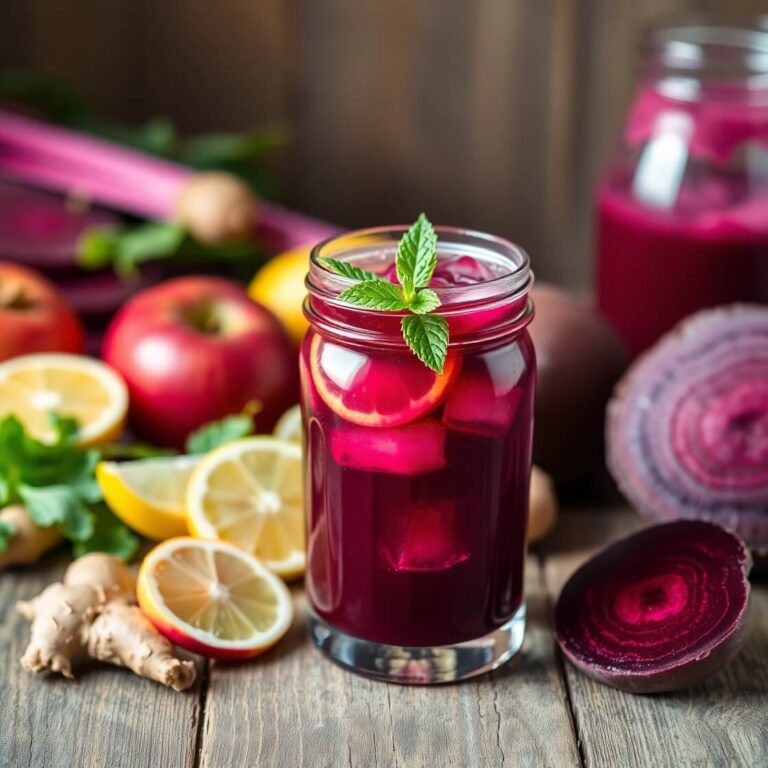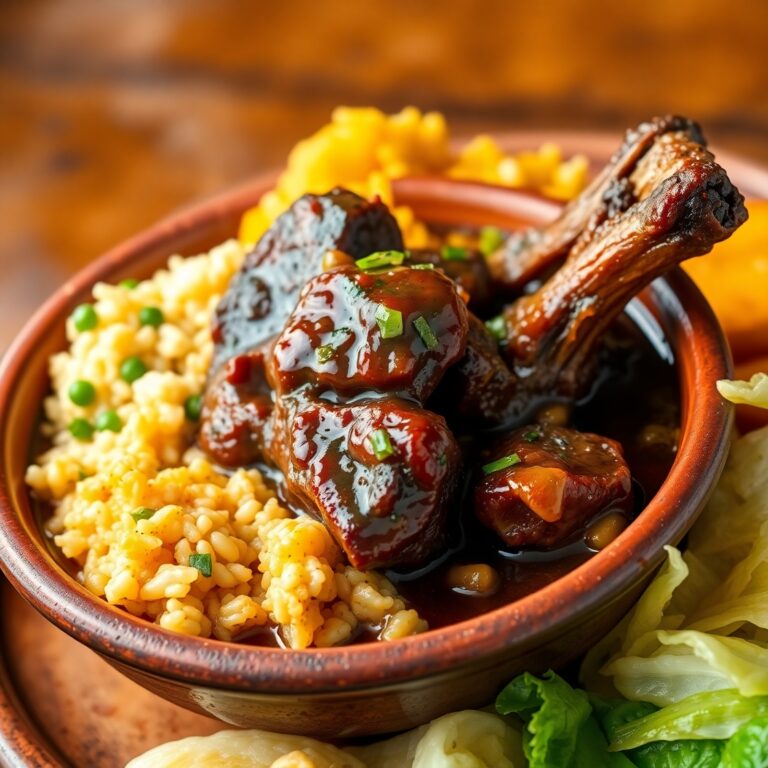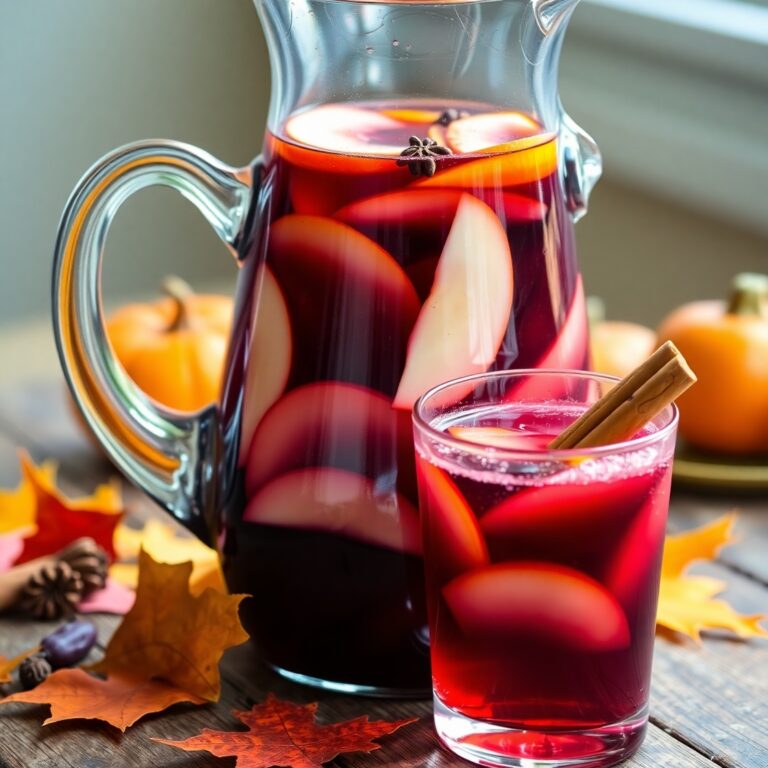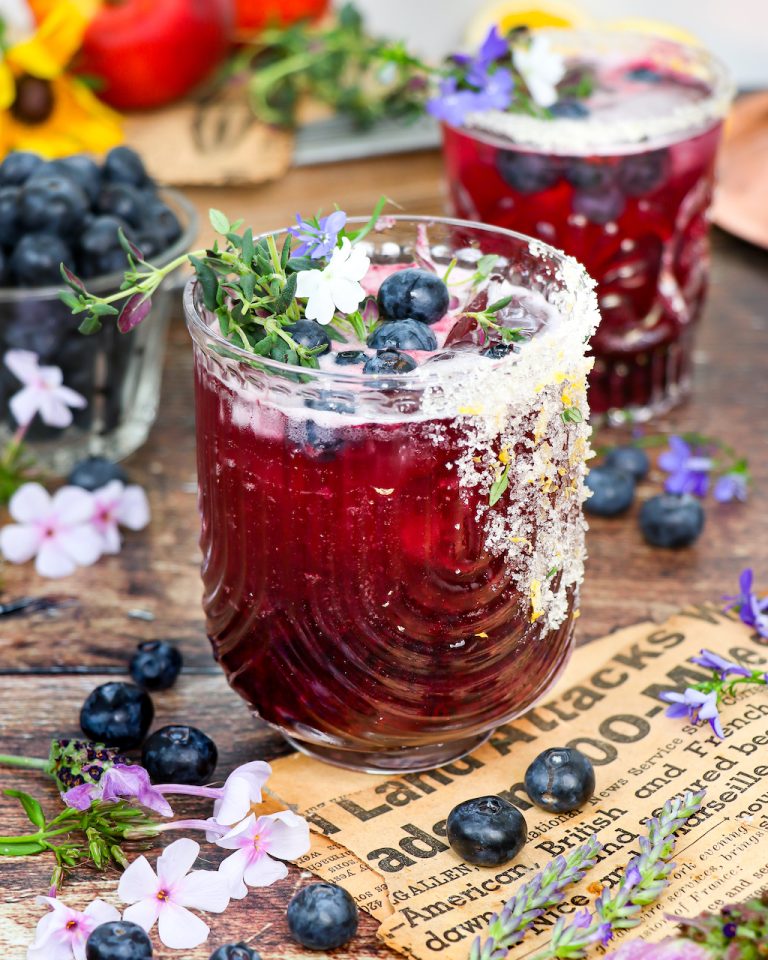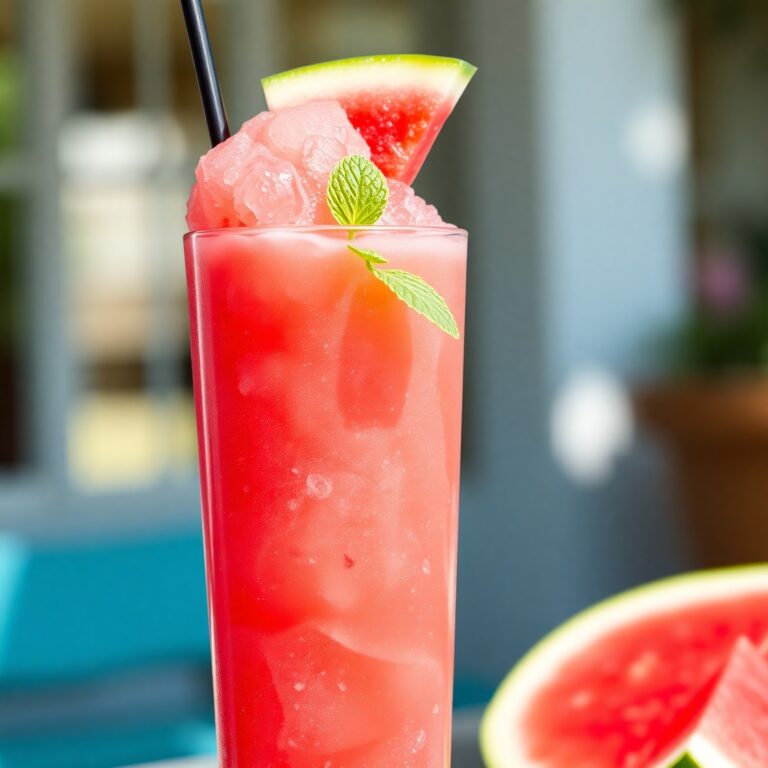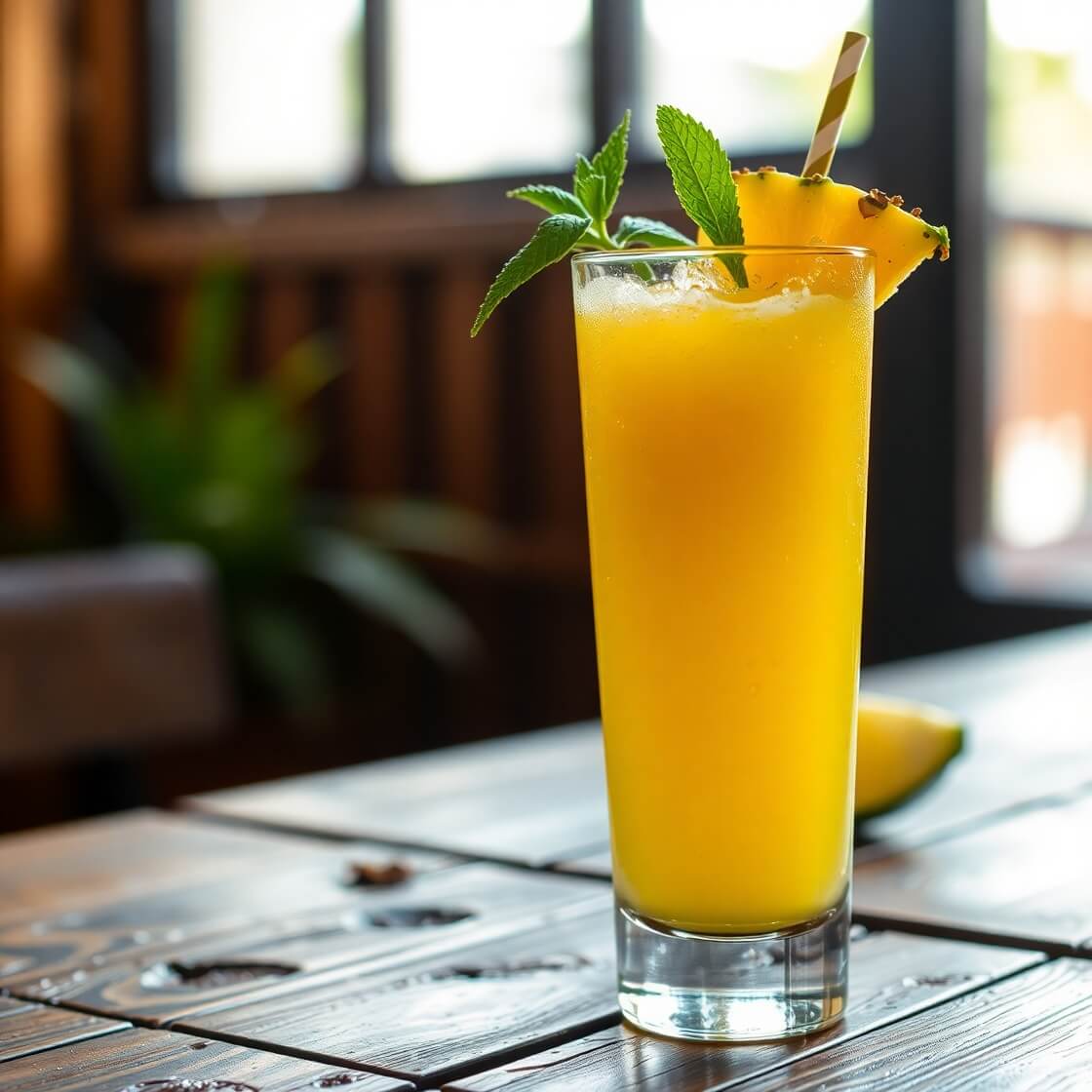
There’s something unforgettable about that first sip of freshly made pineapple juice. It takes you straight to the tropics — even if you’re just standing in your own kitchen on a rainy afternoon.
I made this pineapple juice recipe during one of those long, humid summer afternoons when my body craved something light, refreshing, and invigorating. The kind of drink that cools you from the inside out and feels like a spa day in a glass.
But I didn’t want something bottled or from concentrate. I wanted a version that was vibrant, juicy, and naturally sweet — without the added sugar or preservatives. That’s when I started experimenting, and after a few tweaks, I ended up with this golden glass of sunshine.
Whether you’re entertaining guests, winding down after a long day, or just need a burst of hydration, this juice does the trick — and then some.
Why I Love This Recipe
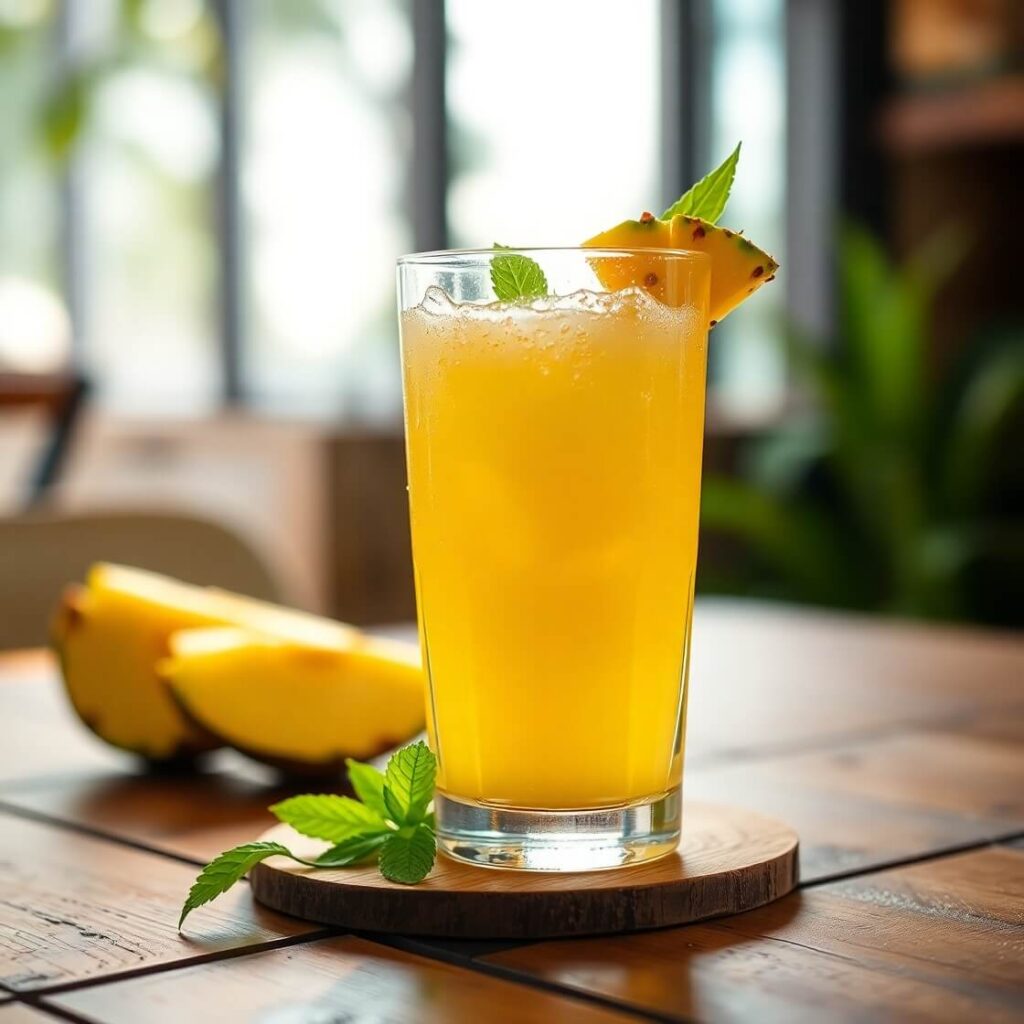
There’s a lot to love about fresh pineapple juice, but let’s start with the fact that it’s naturally sweet, tangy, and incredibly versatile. Unlike store-bought options, which often come loaded with added sugar or artificial flavors, this homemade version gives you total control over what goes in your glass.
Pineapple is naturally high in vitamin C and bromelain — a digestive enzyme known for its anti-inflammatory properties. That means this juice doesn’t just taste good; it’s good for you too.
The best part? It’s a no-fuss drink. No special machines needed (though a blender makes it faster). And it pairs beautifully with everything from breakfast to grilled meals, or even as a cocktail base.
This is the kind of juice you make once, fall in love with, and end up keeping on weekly rotation.
Ingredients for Pineapple Juice
To make fresh, vibrant pineapple juice, you only need a handful of ingredients — but each one plays an important role in balancing the flavor and texture.
The Essential Ingredients:
- Fresh Pineapple: Always opt for ripe, sweet pineapples. They should smell fragrant at the base and yield slightly when pressed. You’ll need one medium-sized pineapple, peeled, cored, and chopped into chunks.
- Cold Water: Helps the pineapple blend smoothly and adjusts the consistency. Use cold filtered water for the best taste.
- Fresh Lime or Lemon Juice (Optional): A small splash of citrus juice balances the sweetness and gives the juice a bright, zesty lift.
- Honey or Maple Syrup (Optional): Only if your pineapple isn’t quite sweet enough. Use sparingly.
- Ice Cubes (Optional): To chill instantly and add a bit of texture when blended.
This recipe doesn’t need anything fancy — just quality ingredients and a little attention to detail.
How Much Time Will You Need?
This juice comes together in under 10 minutes from start to finish, depending on how fast you are at prepping the pineapple.
- Preparation Time: 5–7 minutes
- Blending Time: 1–2 minutes
- Straining and Serving Time: 1–2 minutes
You can double or triple the recipe if serving a crowd, and it keeps well for a few days in the fridge. It’s a fantastic make-ahead option for parties or meal prep.
How to Make This Pineapple Juice

Here’s a simple, detailed step-by-step guide to making the perfect glass of homemade pineapple juice.
Step – 1: Prep the Pineapple
Start by peeling your pineapple. Slice off the top and bottom with a sharp knife, then stand it upright and slice downward along the sides to remove the skin.
Cut out any remaining eyes (brown spots), then core the pineapple by slicing it in quarters and cutting off the tough inner core. Chop the flesh into chunks.
Step – 2: Add to Blender
Place the chopped pineapple chunks into a high-speed blender. If your blender is small, do it in batches.
Add ½ to 1 cup of cold water, depending on how thick or thin you like your juice. You can always adjust the consistency later.
Step – 3: Blend Until Smooth
Blend on high for 60–90 seconds, or until completely smooth. Pause and scrape down the sides if needed.
Step – 4: Strain the Juice (Optional)
For a silky-smooth texture, pour the blended mixture through a fine mesh strainer, cheesecloth, or nut milk bag into a large bowl or pitcher. Use the back of a spoon to press the pulp and extract all the juice.
If you prefer more fiber and texture, you can skip this step.
Step – 5: Adjust the Flavor
Taste the juice. If it needs a little tang, stir in a teaspoon of lime or lemon juice. If it’s too tart, a teaspoon of honey or maple syrup will mellow it out.
You can also stir in a few ice cubes at this point to chill it down.
Step – 6: Serve Fresh
Pour the juice into glasses over ice or store in a sealed jar or bottle. Best served cold and fresh!
Substitutions
Pineapple juice is pretty flexible — here’s how you can switch things up:
- Canned Pineapple: If fresh pineapple isn’t available, you can use canned pineapple chunks (in juice, not syrup). Rinse and drain before blending.
- Coconut Water: Swap out regular water for coconut water for a tropical twist and added electrolytes.
- Mint Leaves: Blend a few fresh mint leaves with the pineapple for a cooling, herbal kick.
- Ginger: Add a ½-inch piece of fresh ginger for warmth and digestion support — great for morning routines.
- Orange Juice: Mixing pineapple with a splash of orange juice balances sweetness and acidity beautifully.
These substitutions not only adjust the flavor but also add new dimensions to the health benefits.
Best Side Dishes for Pineapple Juice
To elevate your sipping experience, pair your pineapple juice with dishes that highlight its sweet, citrusy notes. Here are three of the best:
- Grilled Chicken Skewers with Chili-Lime Marinade
The spice of the chili and tang of lime perfectly complement the juice’s natural sweetness. - Coconut Shrimp
Crisp, sweet, and savory — this tropical pairing brings out the best in both the juice and the shrimp. - Avocado Toast with Feta and Chili Flakes
Creamy, salty, and spicy with a bright sip of pineapple juice in between. A dreamy brunch combo.
Serving and Presentation Tips

Presentation can transform a simple glass of pineapple juice into an irresistible tropical treat. Start by choosing a clear glass or a mason jar to show off the juice’s vibrant golden color.
For a festive touch, rim the glass with a little coarse sugar or a mix of sugar and chili powder — this adds texture and a pop of flavor.
Garnish with a fresh pineapple wedge or a thin slice on the rim. A sprig of fresh mint or a twist of lime zest on top adds a fresh aroma and beautiful contrast.
Serve the juice with a reusable straw or a colorful paper straw for a beachy vibe. If you’re entertaining, place several glasses on a wooden tray with some tropical flowers or leaves as decor to enhance the overall experience.
Chilling the glass in the freezer for 10 minutes before serving helps keep your juice cool longer, especially on warm days.
Tips and Tricks to Make This Recipe Better
If you want your pineapple juice to taste even more spectacular, here are some insider tips to keep in mind:
- Choose the right pineapple. Look for ripe pineapples with a sweet aroma and slightly soft skin. Avoid those that feel mushy or have bruises. A ripe pineapple makes all the difference.
- Chill the fruit before juicing. Cold pineapple blends better and produces a naturally cool juice without needing too much ice — preserving flavor.
- Don’t over-water. Add water gradually during blending to keep your juice flavorful and not too diluted.
- Strain for smoothness or skip for fiber. If you want a smooth, juice-like texture, always strain the pulp. If you prefer a thicker, smoothie-style drink, keep it all in.
- Add citrus last. A splash of lime or lemon juice brightens flavors dramatically, but add it after blending to keep it fresh and vibrant.
- Use fresh ingredients for add-ins. If adding ginger or mint, fresh is always best for bold flavor.
- Serve immediately. Fresh pineapple juice tastes best right after making. If storing, keep it refrigerated and consume within 24-48 hours.
Following these tips ensures your pineapple juice is always refreshing, balanced, and a little bit special.
Common Mistakes to Avoid
While making pineapple juice is straightforward, a few common pitfalls can compromise the taste or texture:
- Using underripe or overripe pineapple. An underripe pineapple tastes sour and less sweet, while an overripe one can ferment or have an off-flavor.
- Adding too much water. Diluting the juice excessively leads to weak, flavorless juice. Add water gradually and taste as you go.
- Skipping the core removal. The core is fibrous and tough; leaving it in will affect texture and juice quality.
- Neglecting to strain (if preferred). For silky juice, not straining will leave pulp and a gritty texture. For some, this is fine, but know your preference.
- Not chilling the juice or glass. Serving warm juice can dull the flavors. Serve chilled for the best experience.
- Storing juice improperly. Pineapple juice oxidizes quickly, which can turn it bitter and reduce freshness. Always store in airtight containers in the fridge and consume quickly.
How to Store It
If you’re not drinking your pineapple juice immediately, proper storage is key to maintaining freshness and flavor.
Store the juice in a clean, airtight glass bottle or jar. Glass is preferable because it doesn’t absorb flavors and keeps the juice fresher longer.
Keep the container refrigerated at all times. Fresh pineapple juice is best consumed within 24 to 48 hours. Beyond this, it begins to lose its bright flavor and can develop off-notes.
If you want to store longer, consider freezing the juice in ice cube trays. Once frozen, transfer the cubes to a sealed freezer bag. This way, you can thaw small amounts as needed without wasting.
Avoid metal containers or plastic that can impart flavors or odors.
FAQ
Q1: Can I make pineapple juice without a blender?
Yes! You can use a juicer if you have one. Peel and chop the pineapple, then feed it through the juicer. For manual methods, you could mash the pineapple and strain through a cheesecloth, but it’s more labor-intensive.
Q2: How do I know if my pineapple is ripe enough for juice?
A ripe pineapple smells sweet at the base, has a slight give when gently pressed, and its leaves pull out easily. Avoid pineapples that are too soft or have brown spots.
Q3: Can I add other fruits to the pineapple juice?
Absolutely! Mango, orange, or passionfruit blend beautifully with pineapple. Start with small amounts to avoid overpowering the pineapple’s signature flavor.
Q4: Is pineapple juice good for digestion?
Yes, pineapple contains bromelain, an enzyme that aids digestion and can reduce inflammation.
Q5: Can I make this recipe vegan and gluten-free?
Yes. The basic pineapple juice recipe is naturally vegan and gluten-free.

Pineapple Juice Recipe
- Total Time: 7 minutes
- Yield: 2 servings
- Diet: Vegan
Description
Bright, refreshing, and naturally sweet, this homemade pineapple juice is the perfect tropical escape in a glass. Made with ripe pineapple, a splash of citrus, and optional sweetener, it’s a healthy, delicious alternative to store-bought juices. Easy to prepare in under 10 minutes, this juice pairs beautifully with a variety of dishes or stands alone as a revitalizing drink any time of day.
Ingredients
- 1 medium ripe pineapple, peeled, cored, and chopped
- ½ to 1 cup cold filtered water
- 1 teaspoon fresh lime or lemon juice (optional)
- 1 teaspoon honey or maple syrup (optional)
- Ice cubes (optional)
Instructions
- Prepare pineapple by peeling, coring, and chopping into chunks.
- Place pineapple chunks in a blender with water and blend until smooth.
- Strain through a fine sieve or cheesecloth for smooth juice, or skip for pulpier texture.
- Adjust flavor with lime/lemon juice and sweetener as needed.
- Serve immediately over ice or refrigerate in an airtight container.
Notes
Use ripe pineapple for the best sweetness and flavor.
Straining is optional based on texture preference.
Serve chilled for maximum refreshment.
Add fresh ginger or mint for flavor variations.
- Prep Time: 7 minutes
- Cook Time: 0 minutes
- Category: Beverage
- Method: Blending
- Cuisine: Global
Nutrition
- Calories: 90

